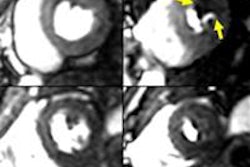Tuesday, December 3 | 3:50 p.m.-4:00 p.m. | SSJ18-06 | Room N226
Using 3-tesla MRI, Chinese researchers are providing a view of how chronic mountain sickness can affect the white-matter microstructure of the brain.The study group analyzed 17 people with chronic mountain sickness and 15 healthy subjects using a 3-tesla MRI scanner (Philips Healthcare). MRI sequences included T1-weighted, T2-weighted, diffusion-weighted, and diffusion tensor imaging.
Fractional anisotropy (FA) and apparent diffusion coefficient (ADC) values of the two groups were generated for regions of interest in areas including the frontal lobe white matter, lenticular nucleus, external capsule, and corpus callosum.
The researchers then investigated the relationships between FA/ADC values and chronic mountain sickness severity and cognitive function.
In the mountain-sickness group, six patients exhibited slight cerebral edema, 15 patients had multiple ischemic foci and lacunar infarction foci, and three individuals had lacunar infarction complicated by ischemic foci.
Among the FA/ADC findings, FA values of the right frontal lobe white matter in the mountain-sickness patients were significantly lower than in the control group. The ADC values of the anterior limb of the right internal capsule in the mountain-sickness group were significantly higher.
Lead author Dr. Hai Hua Bao, vice director of the radiology department at Affiliated Hospital of Qinghai University, and colleagues hope their MRI results help provide reference materials for physicians who see patients with chronic mountain sickness.



.fFmgij6Hin.png?auto=compress%2Cformat&fit=crop&h=100&q=70&w=100)




.fFmgij6Hin.png?auto=compress%2Cformat&fit=crop&h=167&q=70&w=250)











